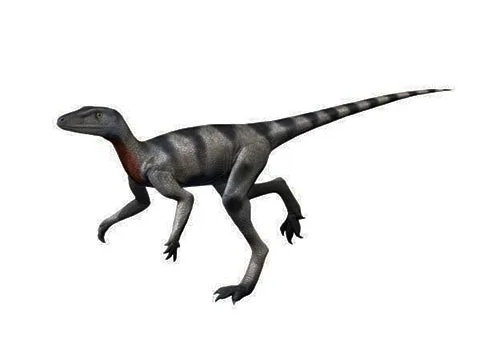Saltopus (hopping foot)

sal-to-pus
Friedrich von Huene – 1910
Carnivore
Estimated 1.2 meters long
Small Theropod
elginensis
Scotland, United Kingdom
Late Triassic, 220 million years ago
Saltopus Facts
Saltopus, meaning “hopping foot,” is a genus of early theropod dinosaur that lived during the Late Triassic period, around 220 million years ago. Its fossils have been found in Scotland, and it is known from only a few fragmentary remains.
Saltopus was a small, bipedal dinosaur that likely measured around 1.2 meters (4 feet) in length. It had long, slender legs and three-toed feet, which may have allowed it to move quickly and efficiently across the ground. Its body was lightweight and streamlined, suggesting that it was adapted for fast, agile movements.
Based on its anatomy, scientists believe that Saltopus was a carnivorous dinosaur that likely preyed on small vertebrates, such as insects, lizards, and small mammals. It may have used its sharp teeth and jaws to catch and kill its prey.
Saltopus is an important dinosaur because it is one of the earliest known theropods, which are the group of dinosaurs that includes some of the most famous carnivorous dinosaurs, such as Tyrannosaurus, Velociraptor, and Allosaurus. The discovery of Saltopus has helped scientists understand the early evolution of theropods and how they became the dominant predators of the Mesozoic era.
Despite being a relatively obscure dinosaur, Saltopus has played an important role in our understanding of the early history of dinosaurs and their evolution. Its small size and swift movements make it a fascinating and intriguing example of the diversity of life during the Triassic period.



